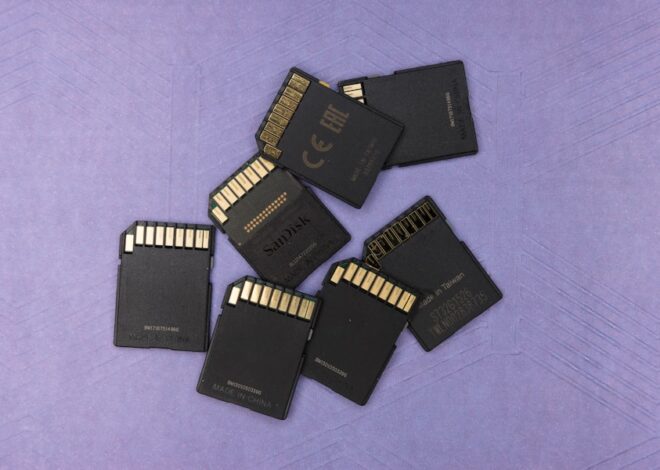
The Ultimate Showdown: Backup vs. Sync – Which One is Right for You?
When it comes to managing your digital files, it’s important to understand the difference between backup and sync. Backup refers to the process of creating a copy of your files and storing them in a separate location, typically on an external hard drive, cloud storage, or a network server. This ensures that your data is safe and secure in case of hardware failure, accidental deletion, or other unforeseen events. On the other hand, sync, short for synchronization, involves keeping the same set of files and folders updated across multiple devices in real-time. This means that any changes made to a file on one device will automatically be reflected on all other synced devices. While both backup and sync are essential for managing your digital assets, they serve different purposes and should be used in conjunction with each other for comprehensive data management.
Backup and sync are often confused with each other, but they serve different purposes and are used in different scenarios. Backup is essential for protecting your data from loss or corruption, while sync is useful for keeping your files up to date across multiple devices. Understanding the difference between these two processes is crucial for effectively managing your digital files and ensuring that your data is always accessible and secure.
The Importance of Backup: Why You Need It
The importance of backup cannot be overstated in today’s digital age. With the increasing reliance on digital devices and the ever-growing volume of data being generated, the risk of data loss has never been higher. Whether it’s due to hardware failure, accidental deletion, malware attacks, or natural disasters, the potential for losing valuable data is a real threat that should not be taken lightly. This is where backup comes in. By creating regular backups of your files and storing them in a secure location, you can rest assured that your data is safe and can be easily recovered in the event of a disaster.
In addition to protecting against data loss, backup also provides peace of mind and allows you to focus on your work without worrying about the safety of your files. Knowing that your data is securely backed up gives you the confidence to take risks, experiment with new ideas, and explore new opportunities without the fear of losing important information. Furthermore, backup is essential for businesses and organizations that rely on critical data for their operations. Without a reliable backup system in place, the consequences of data loss can be catastrophic, leading to financial losses, damaged reputation, and even legal implications.
The Benefits of Sync: How It Can Make Your Life Easier
Sync offers a range of benefits that can make your life easier and more efficient. One of the key advantages of sync is the ability to access your files from any device at any time. Whether you’re at home, in the office, or on the go, having your files synced across all your devices means that you can pick up where you left off without any hassle. This level of flexibility and convenience can greatly improve productivity and allow you to work more effectively, especially in today’s fast-paced and mobile work environment.
Another benefit of sync is the ability to collaborate with others seamlessly. By syncing files across multiple devices, you can easily share and collaborate on documents, spreadsheets, and other files with colleagues, clients, or friends. This can streamline communication and workflow, leading to better teamwork and more efficient project management. Additionally, sync can also help you stay organized by ensuring that all your devices have the latest version of your files, eliminating the need to manually transfer or update files across different devices.
Choosing the Right Solution: Factors to Consider
When it comes to choosing between backup and sync solutions, there are several factors to consider to ensure that you make the right decision for your specific needs. One important factor to consider is the type of data you need to manage. If you have critical data that needs to be protected from loss or corruption, then a reliable backup solution is essential. On the other hand, if you need to access and update your files across multiple devices in real-time, then a robust sync solution is more suitable.
Another factor to consider is the level of automation and control you require. Backup solutions typically offer scheduled backups and automatic file versioning, allowing you to set it and forget it. This can be ideal for users who want a hands-off approach to data management. On the other hand, sync solutions offer real-time updates and instant access to files across devices, providing a more dynamic and interactive experience.
Security and Privacy Concerns: How Backup and Sync Differ
Security and privacy are paramount when it comes to managing digital files, and both backup and sync solutions have their own considerations in this regard. Backup solutions typically focus on creating secure copies of your files and storing them in a separate location, providing an extra layer of protection against data loss. This means that even if your primary device is compromised or damaged, your backup files remain safe and can be easily restored.
On the other hand, sync solutions require careful consideration of security and privacy implications, especially when it comes to sharing files across multiple devices or with other users. It’s important to ensure that your sync solution offers robust encryption, access controls, and secure sharing options to protect your data from unauthorized access or breaches. Additionally, privacy concerns may arise when syncing personal or sensitive information across devices, so it’s crucial to choose a sync solution that prioritizes user privacy and data protection.
The Cost Factor: Comparing the Financial Implications
Cost is another important factor to consider when choosing between backup and sync solutions. Backup solutions typically involve one-time or recurring costs for hardware (such as external hard drives) or cloud storage subscriptions. While these costs may vary depending on the amount of storage space required and the level of redundancy needed, they generally provide a predictable and manageable expense for protecting your data.
On the other hand, sync solutions may involve additional costs for premium features such as real-time syncing, collaboration tools, or advanced security options. Some sync solutions may also have limitations on storage space or device compatibility based on subscription tiers or pricing plans. It’s important to carefully evaluate the cost implications of different sync solutions to ensure that you’re getting the features and capabilities you need without overspending.
Making Your Decision: Which Option is Right for You?
Ultimately, the decision between backup and sync comes down to your specific needs and priorities when it comes to managing your digital files. If you prioritize data protection and want a reliable solution for safeguarding your files against loss or corruption, then a robust backup solution is essential. On the other hand, if you need seamless access to your files across multiple devices and want to collaborate with others effectively, then a reliable sync solution is more suitable.
In many cases, a combination of both backup and sync solutions may be necessary to ensure comprehensive data management. By leveraging the strengths of both backup and sync, you can create a robust data management strategy that provides the best of both worlds – protection against data loss and seamless access to your files wherever you are. It’s important to carefully evaluate your specific requirements, consider the factors outlined above, and choose the right solution that meets your needs while providing peace of mind when it comes to managing your digital assets.


